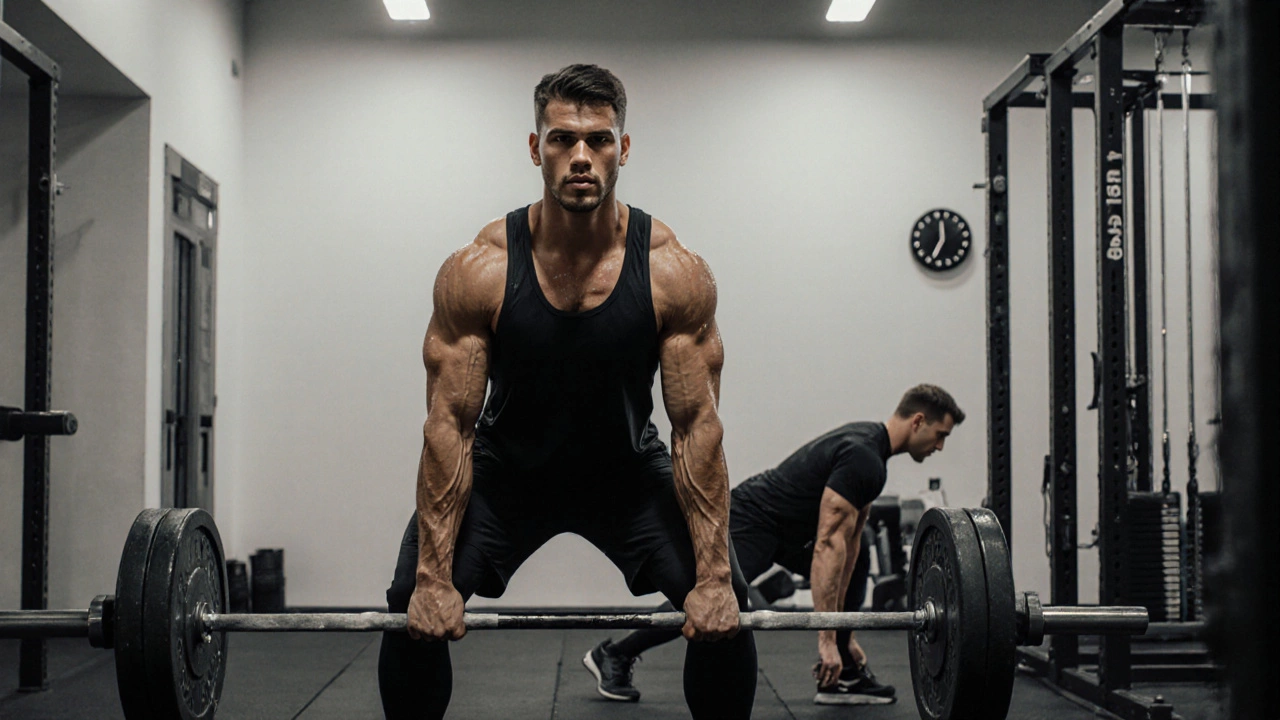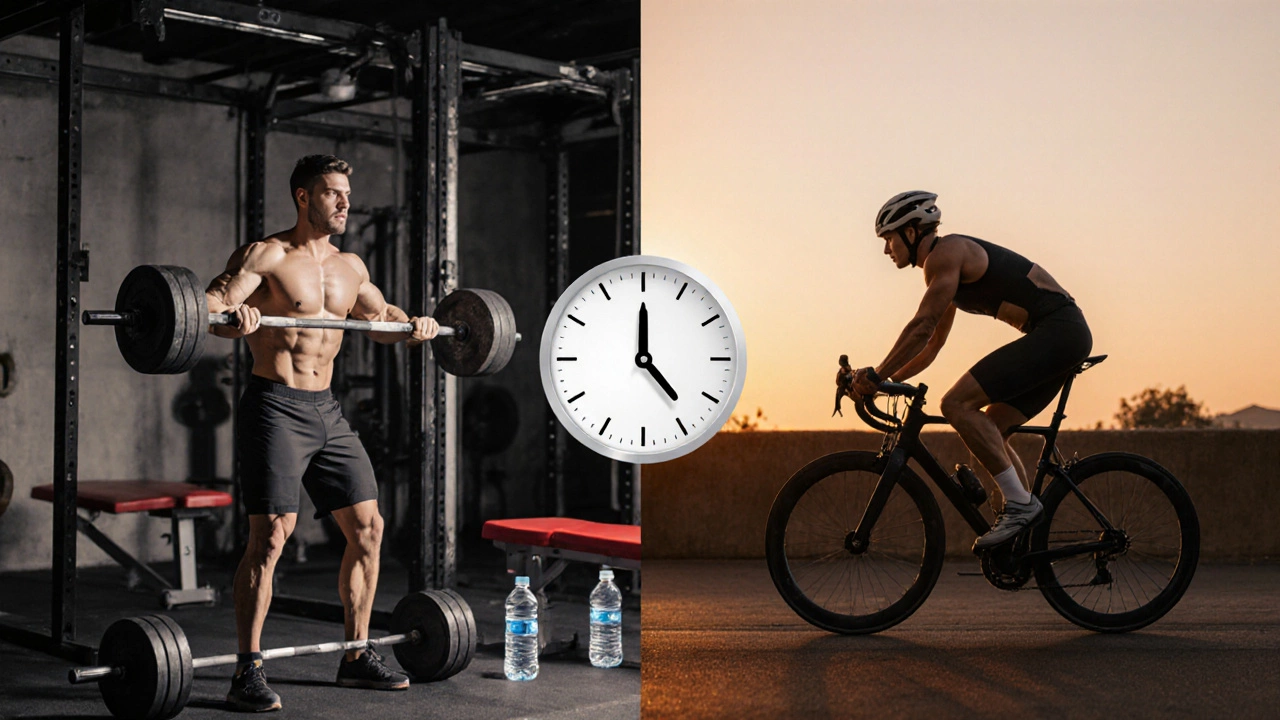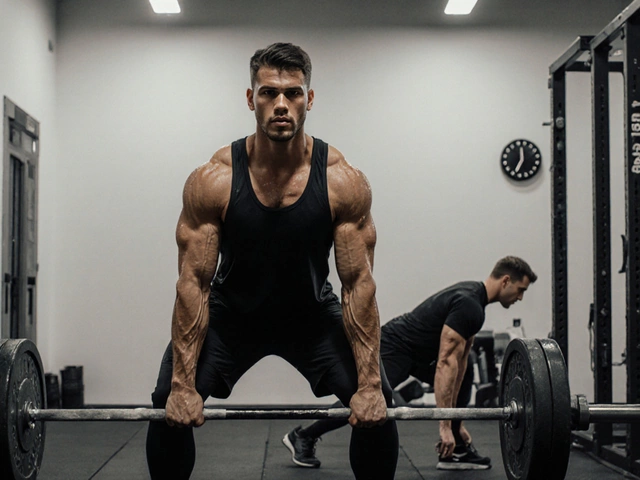Is 2 Hours in the Gym Too Long? What Really Matters for Your Workouts

Workout Duration Calculator
Find out if your gym session is too long, just right, or too short based on your fitness goals and experience.
Two hours in the gym sounds like a lot. Maybe you’ve seen someone there for that long, or maybe you’ve tried it yourself and felt exhausted by the end. But is it too much? Or is it just right? The answer isn’t simple-it depends on what you’re trying to do, how you’re spending your time, and what your body can handle.
What does a 2-hour gym session usually look like?
A two-hour workout isn’t just lifting weights or running on a treadmill for 120 minutes straight. Most people who spend that long are doing a mix of things: warm-up, strength training, cardio, stretching, mobility work, and maybe even foam rolling. Let’s break it down.
- Warm-up (10-15 minutes): Dynamic stretches, light cardio, activation drills. Skipping this increases injury risk.
- Strength training (60-90 minutes): If you’re doing a full-body routine or splitting upper/lower body with multiple sets and exercises, this can easily take an hour or more.
- Cardio (20-30 minutes): Treadmill, bike, rower, or HIIT. Some people add this after lifting; others do it first.
- Cool-down and stretching (10-15 minutes): Static stretching, breathing, recovery moves.
That’s 120 minutes accounted for. No fluff. No scrolling through your phone. Just structured time. But here’s the catch: most people don’t work like that. They take long breaks between sets, chat with friends, check social media, or spend too much time switching equipment. That’s where two hours becomes wasted time, not productive time.
Is 2 hours necessary for results?
Not for most people.
Research from the American College of Sports Medicine shows that for general health and muscle growth, 30-60 minutes of moderate to vigorous activity, 3-5 days a week, is enough. Even elite athletes don’t train for two hours every day. Olympic lifters might hit 90 minutes on heavy days, but they also have recovery days built in. Bodybuilders with extreme routines often split their training into morning and evening sessions-never one 2-hour block.
If you’re trying to build muscle, you don’t need more than 45-75 minutes of intense lifting. After that, your testosterone levels drop, cortisol rises, and your body starts breaking down muscle instead of building it. That’s not progress-that’s overtraining.
Same goes for fat loss. You burn calories during the workout, but the real magic happens in recovery. Too much time in the gym can leave you too tired to eat well, sleep well, or even show up the next day.
Who actually needs 2 hours?
There are exceptions.
Professional athletes, competitive bodybuilders, and people training for specific events like triathlons or strongman competitions often need longer sessions. A triathlete might spend 90 minutes swimming, 60 minutes cycling, and 45 minutes running-but not all in one day. They spread it out.
Rehab patients working with physical therapists might need longer sessions to rebuild mobility after injury. Someone recovering from surgery might do 2 hours of guided movement and stretching over several weeks.
And then there’s the person who just loves being in the gym. Maybe they find peace there. Maybe they use it as therapy. That’s valid too. If you’re not injured, not burned out, and you’re making progress-then your time is yours.

What’s the real problem with long workouts?
It’s not the clock. It’s the efficiency.
Spending two hours in the gym with 5-minute breaks between sets? That’s not dedication-it’s poor planning. You could cut that time in half with better structure.
Here’s what most people do wrong:
- Doing too many exercises for the same muscle group
- Using machines that don’t challenge them enough
- Waiting for equipment instead of supersetting
- Not tracking progress or adjusting intensity
Supersets-pairing two exercises back-to-back with no rest-can cut your workout time by 30-40%. For example, do push-ups followed immediately by rows. Then rest 60 seconds. Repeat. You get the same stimulus in less time.
Compound lifts like squats, deadlifts, bench presses, and pull-ups work multiple muscle groups at once. They’re more efficient than isolation moves like bicep curls or leg extensions. If you’re spending an hour on isolation work, you’re probably missing the point.
How to know if your workout is too long
Your body tells you. Here are signs your sessions are too long:
- You’re consistently exhausted the next day
- You’re skipping meals because you’re too tired to cook
- Your sleep quality has dropped
- You’re not getting stronger, even though you’re training more
- You dread going to the gym
These aren’t signs of being “disciplined.” They’re signs of burnout. Your body needs recovery. You can’t out-train poor recovery.
Track your performance. If your lifts are dropping, your endurance is fading, or you’re getting sick more often, you’re doing too much.

What’s the sweet spot?
For most people, 45-75 minutes is ideal.
That’s enough time to:
- Warm up properly
- Do 4-6 compound lifts with 3-4 sets each
- Add 1-2 accessory moves
- Include 10-15 minutes of cardio or conditioning
- Stretch and cool down
And still have energy left for the rest of your day.
If you’re a beginner, start with 30-45 minutes. Focus on form. Build consistency. You’ll see more progress in 3 months with three 45-minute sessions than you will with one 2-hour session every week.
If you’re advanced and need more volume, split your workouts. Do upper body one day, lower body another. Add cardio on off days. That’s smarter than stuffing everything into one marathon session.
It’s not about time-it’s about intensity
Two people can spend two hours in the gym. One walks out sweaty and energized. The other feels drained and defeated. Why? One trained with purpose. The other just showed up.
Intensity matters more than duration. A 40-minute session with heavy weights, short rest, and full focus will outperform a 2-hour session where you’re half-hearted.
Use a timer. Set rest periods. Keep moving. Leave the phone in your locker. Track your sets and reps. If you’re not challenging yourself, no amount of time will help.
Final thought: Listen to your body, not the clock
There’s no magic number. Some people thrive on short, intense workouts. Others need longer sessions to feel complete. But if you’re spending two hours in the gym because you think you “should,” you’re probably doing it wrong.
Ask yourself: Am I getting stronger? Am I recovering well? Do I feel good after this? If the answer is yes, keep going. If it’s no, cut the time. Focus on quality. Your body will thank you.
Is working out 2 hours a day too much?
For most people, yes. Two hours a day is excessive unless you’re a professional athlete or recovering from injury. For general fitness, muscle growth, or fat loss, 45-75 minutes, 3-5 times a week, is enough. Longer sessions often lead to overtraining, burnout, and decreased recovery.
Can I build muscle with 2-hour workouts?
You can, but it’s not efficient. Muscle growth happens when you lift with enough intensity and give your body time to recover. Spending 2 hours lifting often means too many sets, too much volume, and not enough rest. Your body can’t rebuild muscle if you’re constantly in stress mode. Focus on fewer, heavier lifts with proper rest instead.
Why do some people spend 2 hours at the gym?
Some are training for competitions like bodybuilding or powerlifting. Others use the gym as a mental escape or stress reliever. Some just don’t know how to structure their workouts efficiently. It’s not always about goals-it’s often about habit, routine, or misunderstanding what effective training looks like.
How can I shorten my gym time without losing results?
Cut down on rest between sets (30-60 seconds), combine exercises into supersets (like squats + push-ups), focus on compound lifts (deadlifts, bench press, rows), and skip isolation moves unless necessary. Track your workouts so you’re not wasting time. A 50-minute focused session beats a 2-hour distracted one.
Is it better to work out longer or more frequently?
More frequently is usually better. Five 45-minute sessions a week will give you better results than two 2-hour sessions. Consistency beats marathon workouts. Your body recovers faster when you train regularly but not to exhaustion. Spread the volume out, and you’ll see steady progress without burnout.
If you’re serious about results, stop timing your workouts and start timing your effort. Lift hard. Rest smart. Recover better. That’s how real progress happens-not by clocking hours, but by making every minute count.

